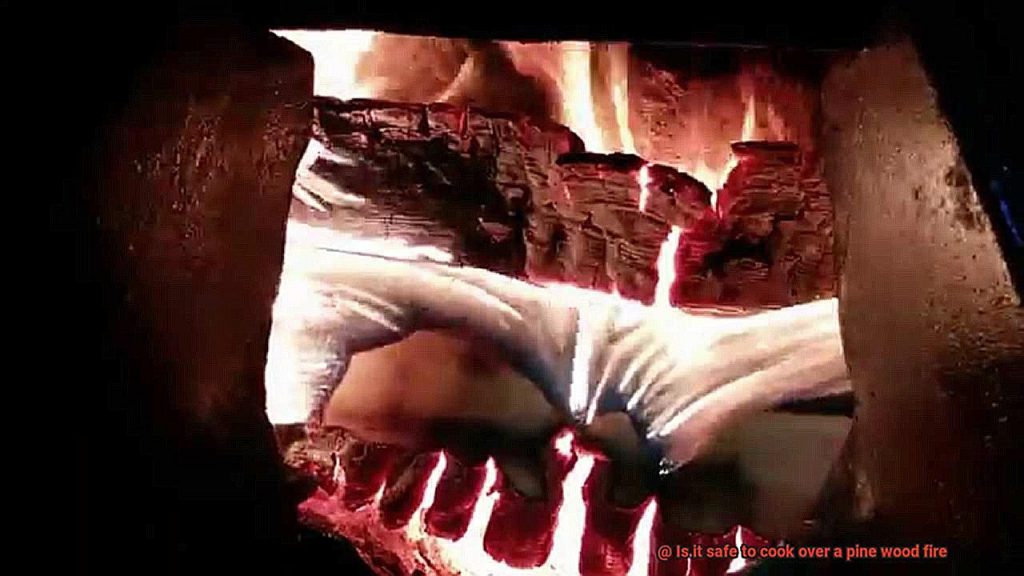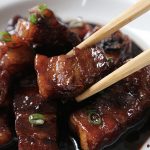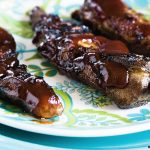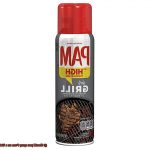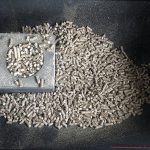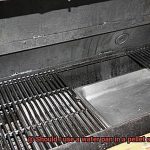Imagine this: you’re surrounded by towering pine trees as you soak in the serenity of nature. As the sun begins to set and the temperature drops, you decide to start a fire to cook your dinner over. But before you get too excited, let’s ask ourselves – is it safe to cook over a pine wood fire?
Pine wood is a popular choice for campfires and fire pits due to its abundance and pleasant aroma. However, there are certain precautions that must be taken when cooking over a pine wood fire. In this blog post, we’ll explore the safety considerations of cooking over a pine wood fire and provide some helpful tips to make your next outdoor cooking experience both safe and successful.
First things first, let’s uncover the potential risks associated with using pine wood for cooking fires. We’ll also delve into some safe practices such as using dry wood, keeping a safe distance from the flames, and avoiding burning large quantities of wood at once. And last but not least, we’ll provide some delicious meal ideas that can easily be prepared over a pine wood fire while staying safe.
Whether you’re an experienced outdoorsman or just starting out on your camping journey, this blog post has something for everyone. So keep reading to learn more about the safety of cooking over a pine wood fire and take your outdoor cooking game up a notch.
Contents [show]
What is Pine Wood?
Pine wood is a versatile and popular type of softwood that is derived from pine trees. Widely found in North America, Europe, and Asia, this wood is commonly used in construction, furniture, and as a fuel source for cooking fires.
The light color and straight grain pattern of pine wood make it an attractive choice for many applications. However, not all pine wood is created equal. It’s important to understand the potential risks and benefits of using pine wood as a fuel source for cooking.
One of the main advantages of using pine wood as a fuel source is its availability and affordability. Pine trees grow relatively fast compared to other hardwoods, which means there is always a ready supply of pine wood. It’s also an affordable option for those on a budget.
However, using pine wood as a fuel source requires caution and preparation. Pine wood is known to produce high amounts of creosote, which can build up in chimneys and cause fires. To minimize this risk, it’s essential to use dry, seasoned pine wood and avoid green or wet wood.
In addition, pine wood can produce more sparks than other types of wood, which can be dangerous if they come into contact with flammable materials or surfaces. To reduce this risk, it’s important to use a sturdy fire pit or grill that is designed for outdoor cooking and to keep a close eye on your fire at all times.
It’s important to note that not all types of pine wood are created equal when it comes to cooking fires. Resinous pine (also known as fatwood) produces more smoke and can leave a residue on your food, while dry or seasoned pine burns cleaner and produces less smoke. Properly preparing your pine wood for cooking by storing it in a dry place and allowing it to season for several months before use will help reduce the moisture content of the wood and improve its burning efficiency.
Benefits of Cooking Over Pine Wood
Pine wood has been used for cooking for many years, and it’s easy to see why. Let’s take a closer look at the benefits of cooking over pine wood.
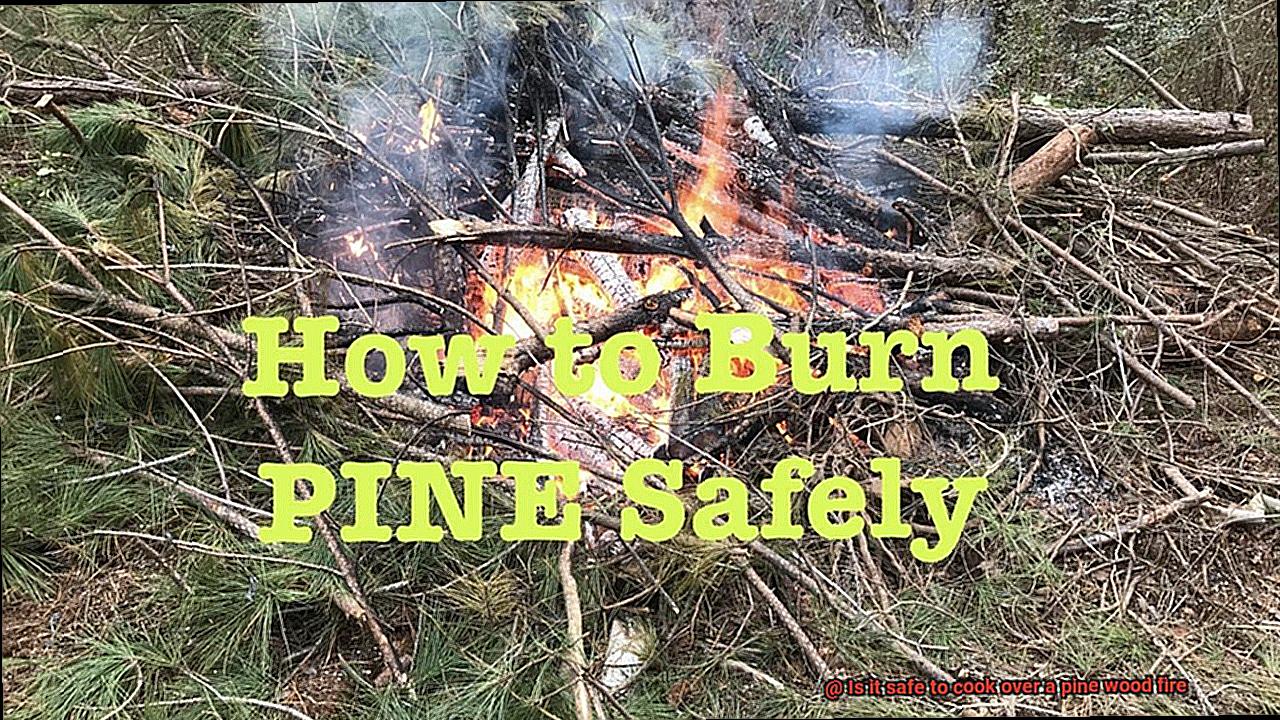
Firstly, pine trees grow abundantly in many parts of the world, making it a readily available fuel source for cooking. It’s also relatively cheap compared to other types of wood, making it an affordable option for backyard grilling and camping trips. This means you can enjoy the benefits of pine wood wherever you are.
One of the most significant advantages of cooking over pine wood is its unique flavor profile. The smoke from the pine wood infuses meat, vegetables, and other foods with a delicious smoky flavor that cannot be replicated by other fuels. This is especially true when cooking low and slow, such as when smoking meat or fish.
Moreover, pine wood burns hot and fast, which makes it perfect for searing meats or quickly cooking vegetables. Its high heat output also means that it can quickly bring a grill or smoker up to temperature, reducing the time needed to start cooking.
Another benefit of using pine wood is its eco-friendliness. Pine trees are a renewable resource, and using them for fuel does not contribute to the depletion of non-renewable resources. Additionally, burning pine wood produces less carbon emissions than burning other fuels, making it a greener choice for those who are environmentally conscious.
It’s important to note that like any fuel source, there are potential risks associated with cooking over pine wood. To avoid accidents and ensure safe cooking techniques, it’s essential to practice proper preparation.
Potential Risks of Cooking Over Pine Wood
If so, you may have considered using pine wood as your fuel source. However, before you start cooking over a pine wood fire, it’s important to be aware of the potential risks involved.
One major concern when cooking over pine wood is the release of harmful chemicals. Pine wood contains resin, which can release chemicals like formaldehyde and benzene when burned. These chemicals can pose a significant risk to your health if inhaled or ingested, causing long-term health consequences. Therefore, individuals with respiratory issues or allergies should avoid cooking over pine wood fires altogether.
Another issue with pine wood is the amount of smoke it produces when burned. This smoke not only irritates your eyes and lungs but can also leave a strong smoky flavor on your food. While some might enjoy this flavor, it might not be desirable for everyone. Additionally, the smoke produced can make it difficult to monitor your cooking and might even trigger smoke alarms.
Furthermore, pine wood can cause creosote buildup in chimneys or other cooking equipment. Creosote is a highly flammable substance that accumulates over time, increasing the risk of chimney fires or other hazards. So, it’s essential to clean your chimneys and cooking equipment regularly to prevent creosote buildup and reduce the risk of accidents.
Lastly, pine wood burns at high temperatures, making it potentially dangerous if not monitored closely. You must exercise caution when cooking over any type of fire, including those fueled by pine wood.
Considerations for Safety When Cooking Over Pine Wood Fire
It’s crucial to prioritize safety when cooking with this type of wood, as it is notorious for producing high amounts of resin and sap that can lead to flare-ups and potentially dangerous situations. Here are some key safety considerations to keep in mind:
First and foremost, start with a clean fire pit. Ensure that your cooking area is free of debris or flammable materials before starting your fire. This will help prevent accidental fires and ensure that your cooking area is safe.
Secondly, use only dry pine wood for your fire. Wet or green pine wood can produce more smoke and creosote buildup, which can be harmful when ingested. Opt for dry pine wood to reduce the risk of these harmful particles.
Thirdly, keep a vigilant eye on the fire at all times. Pine wood fires can easily flare up and cause dangerous situations. It’s essential to have a fire extinguisher or water source nearby in case of an emergency.
Fourthly, avoid using lighter fluid. This can increase the risk of flare-ups and potentially harmful chemicals being released into the air. Instead, try natural fire starters like kindling or newspaper.
Lastly, always cook at a safe distance from the flames. It’s important to keep a safe distance from the flames to avoid burns or other injuries when cooking over a pine wood fire. Use long-handled tools to cook your food and stay close enough to monitor the flames.
So, here are some key points to keep in mind when cooking over a pine wood fire:
- Start with a clean fire pit
- Use only dry pine wood
- Keep a vigilant eye on the fire
- Avoid using lighter fluid
- Cook at a safe distance from the flames
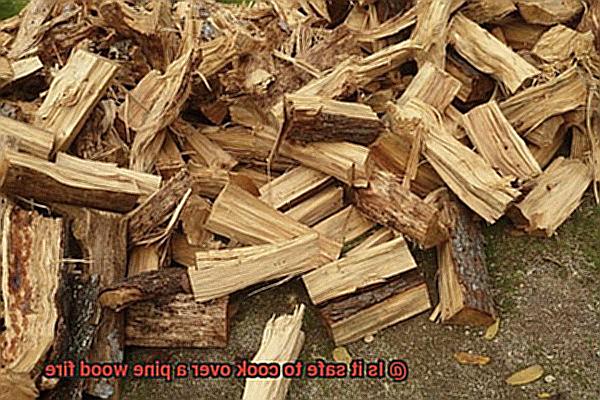
Tips for Safely Cooking Over a Pine Wood Fire
Cooking over a pine wood fire can be a delightful experience, but it also comes with its own set of safety concerns. Pine wood burns hot and fast, which can lead to flare-ups and overcooked or burnt food. To ensure a safe and enjoyable cooking experience, here are five crucial safety tips to follow:
Tip #1: Use Seasoned Wood
Unseasoned wood contains more moisture and can create more smoke, which can add an unpleasant taste to your food. Instead, use dry, seasoned pine wood for a cleaner burn. Seasoning the wood for at least six months will help you avoid any potential hazards associated with wet or green wood.
Tip #2: Build a Stable Fire
Building a stable fire is essential for ensuring that the cooking surface is level and doesn’t tip over. Use a fire pit or build a fire ring with rocks or bricks to keep the fire contained. This will also prevent any embers from flying out and causing a fire hazard.
Tip #3: Keep a Safe Distance
Keeping a safe distance between the cooking surface and the flames will help prevent flare-ups and ensure that your food cooks evenly. A distance of at least 6-8 inches is recommended. This will also minimize the risk of any accidental burns.
Tip #4: Use a Grill Grate
A grill grate placed over the fire pit or fire ring provides a stable cooking surface and prevents food from falling into the flames. It also helps distribute heat evenly across your food for better cooking results. Make sure to clean your grill grate regularly to avoid any potential creosote buildup.
Tip #5: Monitor the Fire
It’s crucial to keep an eye on the fire at all times and make sure it doesn’t get too hot or out of control. Have a bucket of water or sand nearby in case of emergencies. Never leave the fire unattended, even for a few minutes.
How to Minimize the Risk of Creosote Buildup
Cooking over a pine wood fire can be a great way to enjoy the outdoors, but it can also pose some safety risks. One major concern is the buildup of creosote in the chimney or flue, which can lead to dangerous chimney fires. To minimize this risk, here are five tips to help you cook safely over a pine wood fire:
Choose Dry, Seasoned Pine Wood
Pine wood contains higher levels of resin than other woods, which increases the production of creosote. Using dry, seasoned pine wood that has been stored in a dry place for at least six months can minimize the risk of creosote buildup. Wet or unseasoned wood produces more smoke and creates more creosote buildup.
Mix Pine with Other Hardwoods
Mixing pine with other hardwoods such as oak or maple can reduce the amount of creosote buildup. These woods have lower resin content and produce less creosote buildup. This also helps to create a more consistent and controllable fire.
Ensure Proper Ventilation
Proper ventilation is key to preventing creosote buildup. Keeping the damper open and allowing enough air to flow through the fireplace or stove will reduce the amount of smoke produced and prevent creosote from accumulating.
Use a Sturdy Fire Pit or Grill
When cooking over a pine wood fire, sparks and embers are a concern. Using a sturdy fire pit or grill designed for outdoor cooking can help prevent sparks from coming into contact with flammable materials or surfaces. Using accelerants like gasoline or lighter fluid should be avoided, as they increase the risk of sparks and flames.
Regularly Clean Your Chimney or Stovepipe
Regular cleaning of your chimney or stovepipe is crucial in preventing creosote buildup. It’s recommended to hire a professional chimney sweep annually to inspect and clean your chimney or stovepipe thoroughly. This ensures that any creosote buildup is removed before it becomes a significant fire hazard.
How to Minimize the Risk of Sparks and Embers
Cooking over an open flame can be a thrilling experience, but it’s essential to minimize the risk of sparks and embers when using pine wood as fuel. Here are five sub-sections that explain how to do just that:
Use dry wood
Wet or green wood produces more smoke and sparks, increasing the risk of fire. Select dry wood that has been seasoned for at least six months. This wood burns hotter and produces fewer sparks and embers, making it safer to cook with.
Keep the fire small
A smaller fire produces fewer sparks and embers. Use small pieces of wood and keep the flames low to reduce the risk of stray sparks igniting nearby objects.
Use a spark screen
Consider using a spark screen, which is a mesh cover that fits over your fire pit or grill. It helps to contain sparks and embers, reducing the risk of them escaping and causing damage.
Use a windbreak
Wind gusts can cause sparks and embers to spread further than they normally would. Set up a windbreak, such as a wall or fence, to protect your food and the surrounding environment from these gusts.
Keep a water source nearby
In case of an emergency, it’s essential to have water nearby to quickly put out any stray sparks or embers before they become larger fires. Consider keeping a bucket of water or sand nearby to extinguish any small fires.
Ef3DBzwhWSs” >
Conclusion
In summary, cooking over a pine wood fire can be an incredibly satisfying and mouth-watering experience. However, it’s important to keep in mind that pine wood produces high levels of creosote and sparks, which can pose health and safety risks if not handled with care.
Fortunately, there are several simple precautions you can take to minimize these risks while still enjoying the unique flavor profile that pine wood provides. For starters, always use dry seasoned wood and build a stable fire in a clean pit or grill. Be sure to keep a safe distance from the flames and use a grill grate to prevent food from falling into the fire.
It’s also worth noting that mixing pine with other hardwoods like oak or maple can reduce creosote buildup. And when it comes to cleaning your chimney or stovepipe, it’s best to leave it to the professionals. Hiring a chimney sweep annually can go a long way in preventing dangerous creosote buildup.
By following these tips for safely cooking over a pine wood fire, you’ll be able to enjoy all the delicious benefits without any unnecessary hazards. So why not plan your next outdoor cooking adventure today?

